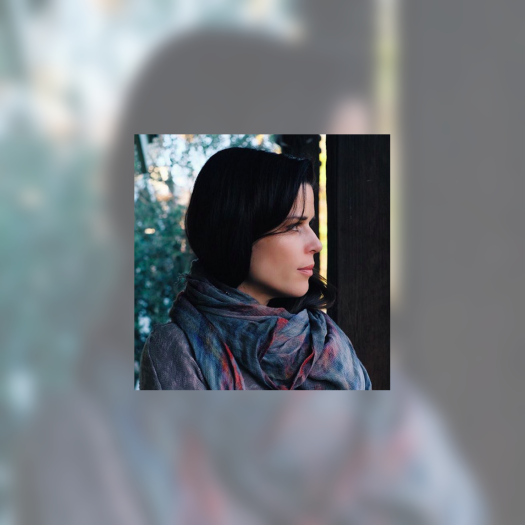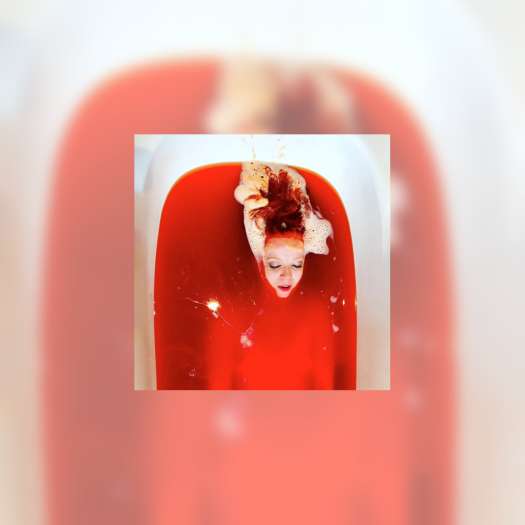Sequels are a high-risk, low-reward proposition. How often are they better than the original? How often are they even as good as the original? Not very. The road to pop-cultural hell is paved with well-intended reboots, revivals, retrospectives and reunions. Now, Our Lady Peace's Spiritual Machines II joins a long line of ill-advised sequels, and for fans of arguably the Canadian alt-rockers' most widely praised record, this one might hurt.
Released at the tail end of the year 2000, the original Spiritual Machines put forth brainy, high-concept rock at a time when Radiohead had effectively changed the meaning of "alternative rock" with OK Computer and Kid A. Today, Spiritual Machines still holds up as a smart, invigorating and emotionally resonant rock record that's poppy, but still a bit gritty.
The album also marked the end of an era for Our Lady Peace, being the last album to fully feature the band's original guitarist Mike Turner, the last to be helmed by longtime producer Arnold Lanni and, until now, the last to feature model Saul Fox on the album cover. The band would go on to adopt a noticeably more mainstream rock sound on 2002's Gravity and beyond.
Like its predecessor, Spiritual Machines II is inspired by the ideas and predictions of inventor and futurist Raymond Kurzweil. Likewise, it features several spoken excerpts of Kurzweil himself interspersed between the tracks. Several of the songs are tie-ins: "Future Disease" is meant to be a segue from the original' album's finale "The Wonderful Future," "Wish You Well" serves as a sequel to "Are You Sad?" and "Temporary Healing" feels like a reprise of "In Repair." Original guitarist Turner even has a small role. (Barely a footnote, really. It turns out that Turner contributed the musical backdrop to the minute-long interlude "RK4.Escape Velocity" — a holdover from the original Spiritual Machines sessions.)
But in sound and spirit, Spiritual Machines II is worlds apart. It's not that Our Lady Peace should have made a record that's exactly like the original; artists grow and evolve over time, and an artistically motivated sequel should reflect that. But this tacky pop effort would be a misstep at any time in Our Lady Peace's career — the fact that it's Spiritual Machines II, the sequel to one of their most beloved records, only makes matters worse.
Producer Dave Sitek reportedly described the album as "future rock," while singer Raine Maida has called it "anti-rock." These terms would be pretentious and self-indulgent enough already, but when you hear the music they're describing, it makes them look pitifully out of touch with what's on the cutting edge of modern music. Spiritual Machines II is the opposite of futuristic — it's accidentally retro in unflattering ways.
"Future Disease" takes a stab at dance-rock, but it's far too lethargic for actual dancing. "Stop Making Stupid People Famous" is an overly kitschy pop tune that spoils a guest feature by Pussy Riot's Nadya Tolokonnikova on a lyrical premise akin to a Facebook meme. "19 Days" sounds like Maroon 5 without any of the sex appeal. "The Message" takes a cue from the vaguely Middle Eastern sounds of Naveed and warps it into funky electro-pop. "Run" sounds like a TV commercial for activewear. (All of that said, you have to give credit to the musicianship of bassist Duncan Coutts, who flourishes in his role even in this ill-conceived project.)
These songs take OLP out of the realm of sophisticated alt-rock and into the world of generic pop-rock you mostly hear in shopping malls. You could compare it to something like Muse, the Killers or Franz Ferdinand instead; either way, it's uninventive and dated. The future, apparently, sounds like 2006. If the original Spiritual Machines had sounded like Tears for Fears and Duran Duran, it surely would have been roundly rejected.
Some of it almost works. Spiritual Machines II is most palatable when the band goes for a sound that's more or less "Radiohead meets U2." The quick gear-shifting of "Simulation" comes closest to succeeding at their idea of futuristic rock. "Good Die Young" is a knotty and complex, yet firmly grounded bit of artsy soft-rock. While it's a bit too sappy, "Wish You Well" is a synth-heavy, inspirational rocker that recalls their transitional era of Healthy in Paranoid Times. The hard-nosed melodies of "Holes" could've made for a standout track, but it's far too repetitive to make a real impact.
A sequel to Spiritual Machines was a promising concept with the potential to bring back fans who had lost interest over the years. Unfortunately, the result totally backfires as Our Lady Peace grasp for ways to stay in the zeitgeist. In 2000, Spiritual Machines found the band at their artistic peak. Two decades later, their eyes are so pointed toward the future that they haven't noticed the present has passed them by.
(Shelter Music Group)Released at the tail end of the year 2000, the original Spiritual Machines put forth brainy, high-concept rock at a time when Radiohead had effectively changed the meaning of "alternative rock" with OK Computer and Kid A. Today, Spiritual Machines still holds up as a smart, invigorating and emotionally resonant rock record that's poppy, but still a bit gritty.
The album also marked the end of an era for Our Lady Peace, being the last album to fully feature the band's original guitarist Mike Turner, the last to be helmed by longtime producer Arnold Lanni and, until now, the last to feature model Saul Fox on the album cover. The band would go on to adopt a noticeably more mainstream rock sound on 2002's Gravity and beyond.
Like its predecessor, Spiritual Machines II is inspired by the ideas and predictions of inventor and futurist Raymond Kurzweil. Likewise, it features several spoken excerpts of Kurzweil himself interspersed between the tracks. Several of the songs are tie-ins: "Future Disease" is meant to be a segue from the original' album's finale "The Wonderful Future," "Wish You Well" serves as a sequel to "Are You Sad?" and "Temporary Healing" feels like a reprise of "In Repair." Original guitarist Turner even has a small role. (Barely a footnote, really. It turns out that Turner contributed the musical backdrop to the minute-long interlude "RK4.Escape Velocity" — a holdover from the original Spiritual Machines sessions.)
But in sound and spirit, Spiritual Machines II is worlds apart. It's not that Our Lady Peace should have made a record that's exactly like the original; artists grow and evolve over time, and an artistically motivated sequel should reflect that. But this tacky pop effort would be a misstep at any time in Our Lady Peace's career — the fact that it's Spiritual Machines II, the sequel to one of their most beloved records, only makes matters worse.
Producer Dave Sitek reportedly described the album as "future rock," while singer Raine Maida has called it "anti-rock." These terms would be pretentious and self-indulgent enough already, but when you hear the music they're describing, it makes them look pitifully out of touch with what's on the cutting edge of modern music. Spiritual Machines II is the opposite of futuristic — it's accidentally retro in unflattering ways.
"Future Disease" takes a stab at dance-rock, but it's far too lethargic for actual dancing. "Stop Making Stupid People Famous" is an overly kitschy pop tune that spoils a guest feature by Pussy Riot's Nadya Tolokonnikova on a lyrical premise akin to a Facebook meme. "19 Days" sounds like Maroon 5 without any of the sex appeal. "The Message" takes a cue from the vaguely Middle Eastern sounds of Naveed and warps it into funky electro-pop. "Run" sounds like a TV commercial for activewear. (All of that said, you have to give credit to the musicianship of bassist Duncan Coutts, who flourishes in his role even in this ill-conceived project.)
These songs take OLP out of the realm of sophisticated alt-rock and into the world of generic pop-rock you mostly hear in shopping malls. You could compare it to something like Muse, the Killers or Franz Ferdinand instead; either way, it's uninventive and dated. The future, apparently, sounds like 2006. If the original Spiritual Machines had sounded like Tears for Fears and Duran Duran, it surely would have been roundly rejected.
Some of it almost works. Spiritual Machines II is most palatable when the band goes for a sound that's more or less "Radiohead meets U2." The quick gear-shifting of "Simulation" comes closest to succeeding at their idea of futuristic rock. "Good Die Young" is a knotty and complex, yet firmly grounded bit of artsy soft-rock. While it's a bit too sappy, "Wish You Well" is a synth-heavy, inspirational rocker that recalls their transitional era of Healthy in Paranoid Times. The hard-nosed melodies of "Holes" could've made for a standout track, but it's far too repetitive to make a real impact.
A sequel to Spiritual Machines was a promising concept with the potential to bring back fans who had lost interest over the years. Unfortunately, the result totally backfires as Our Lady Peace grasp for ways to stay in the zeitgeist. In 2000, Spiritual Machines found the band at their artistic peak. Two decades later, their eyes are so pointed toward the future that they haven't noticed the present has passed them by.




